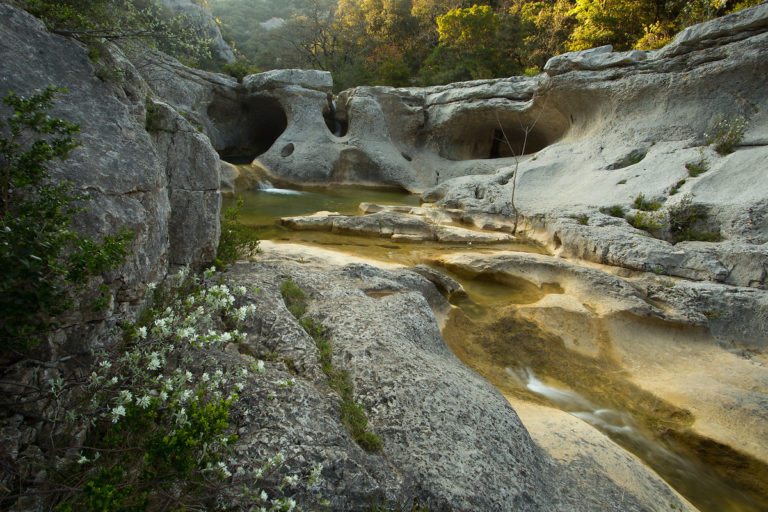Classification : Classified site / NATURA 2000 / SNA
Managing organization : Managing Syndicate of the Ardèche Gorges
Presentation :
A steep-sided canyon.
As a tributary of the Ardèche, the Rieussec has a bed encased in limestones with Uronian facies. Its torrential regime has generated the formation of karst morphologies characteristic of temporary rivers benefiting from an episodic hydrological regime depending on the duration and intensity of rainy episodes. As a result, its bed is marked by innumerable pots of giants, sometimes of plurimetric diameter and due to a process of “marmitage”. The torrent carries pebbles trapped in small natural asperities. As the water flows, the pebble turns on itself and erodes (vortex erosion) its casing until it forms a bowl with smooth walls. If these giant pots (also called devil’s pots), as they evolve and grow, become coalescent. The canyon of Rieussec is dotted with giant pots stepped about 2km long. Downstream, the pebbles (ovoid to perfectly spherical) expelled from their pots during heavy floods are easily identified in the sediments of the small sedimentary cone joining the bed of the Ardèche. Scientific or educational interests :
- Intermittent operation of a karst torrent
- Sedimentary dynamics (erosion, deposition)
- Erosion forms (giant pots)
Thematic key words : cartography, climatology, geography, sedimentary geology, geomorphology, hydrogeology, hydrology, impact on tourist numbers, karstology, meteorology,
Keywords typology of sites : canyon – gorge, landscapes
Access modalities :
The Rieussec route (very busy in summer and not very technical), as its name suggests, only runs a few days a year. However, it is a renowned place for walking in a splendid setting, which does not require a rope despite some tough passages. Its course runs for approximately 2.2 km. Allow about 2 hours for the descent with a drop of 70 m.
Weather conditions and the ease of the public determine how to access the canyon. Thus the course can be made impossible in the event of too high water level and certain exposed passages require the use of a lifeline for group safety.
Possible support :
Technical support during your outings by the Departmental Speleology Committee allows you to have :
- skills to ensure group security,
- scientific materials according to your needs,
- documentation on the sector (topography, bibliography, possibly a dataset of the monitoring carried out),
- in-depth knowledge of the places in order to optimally implement your project
